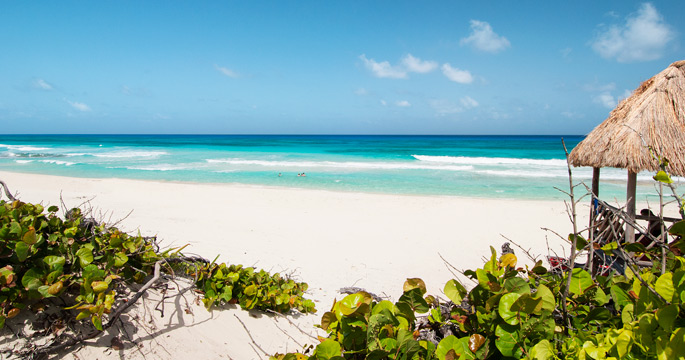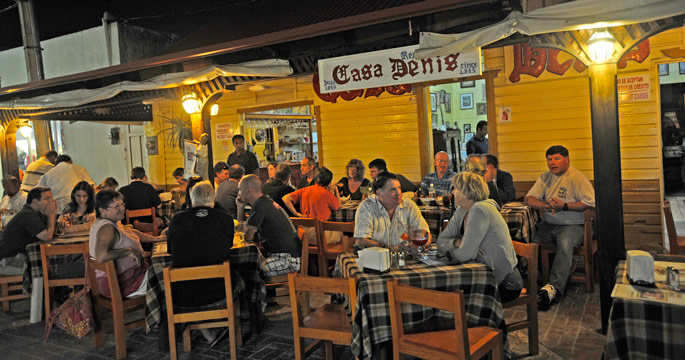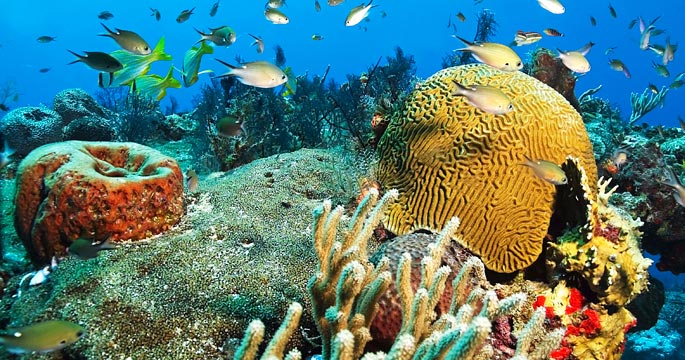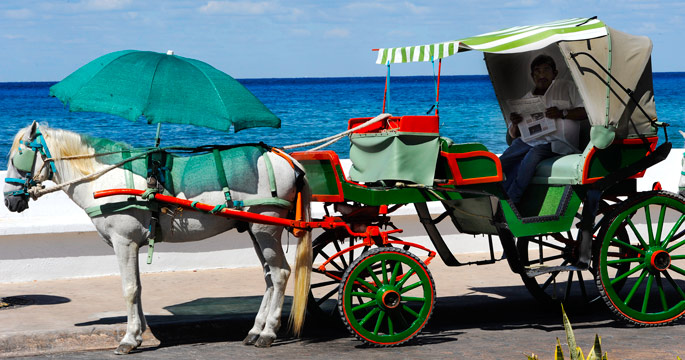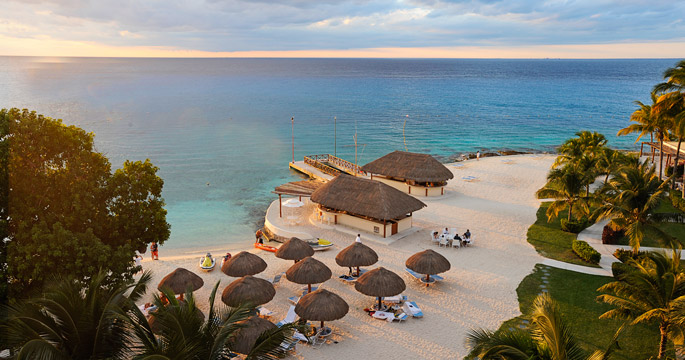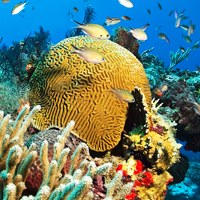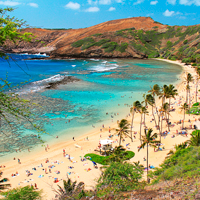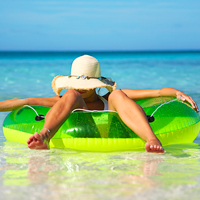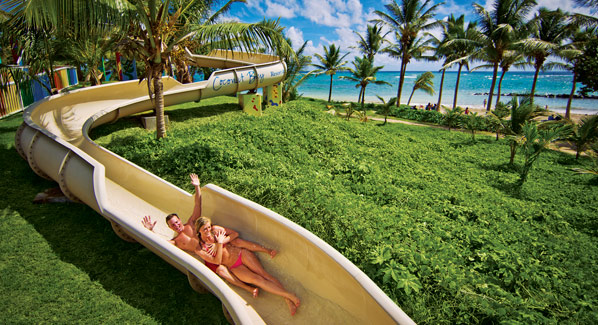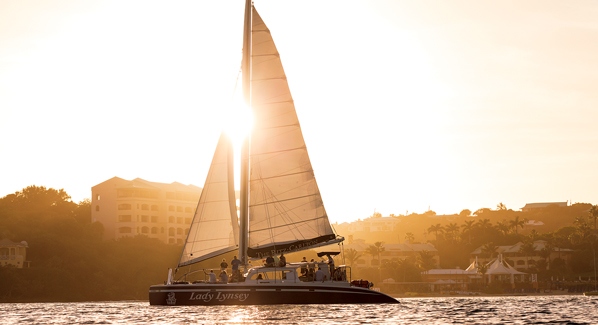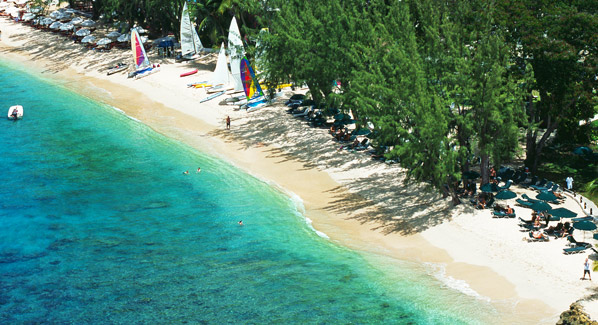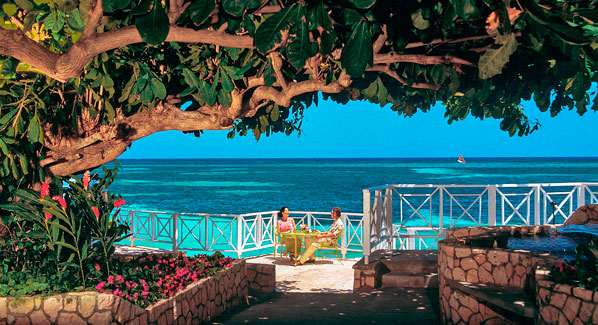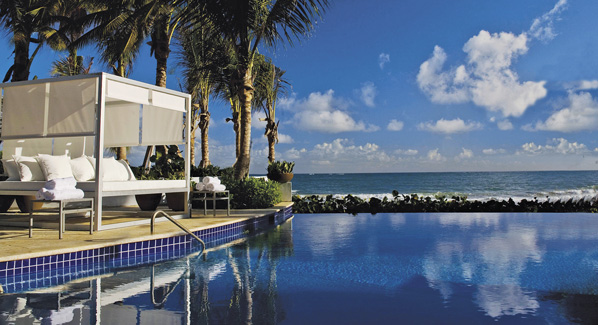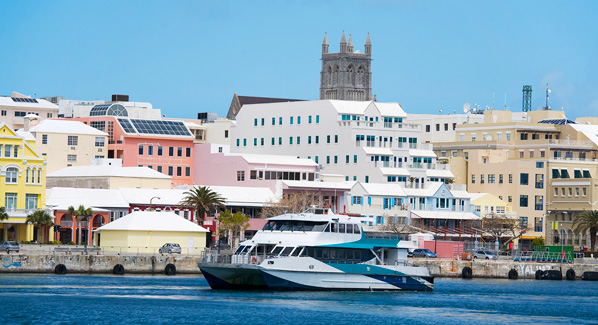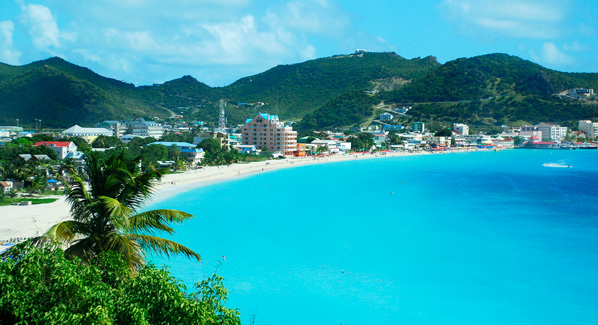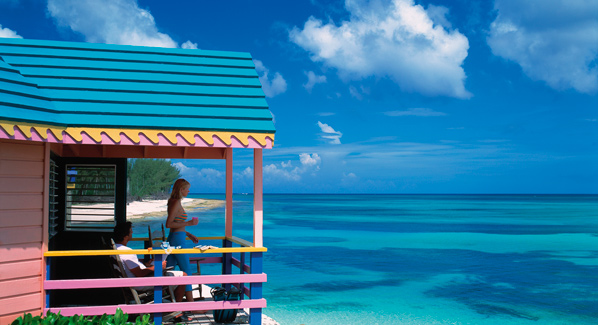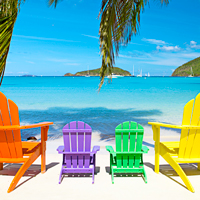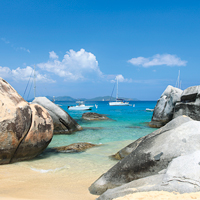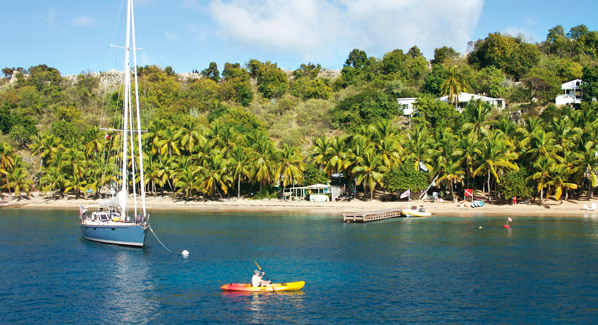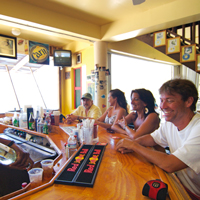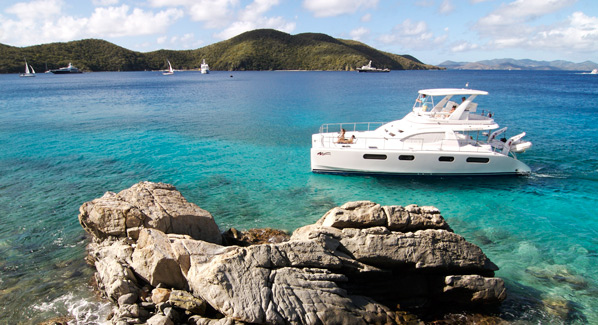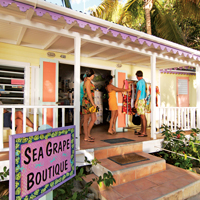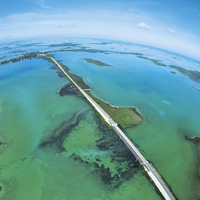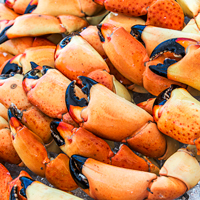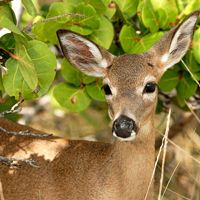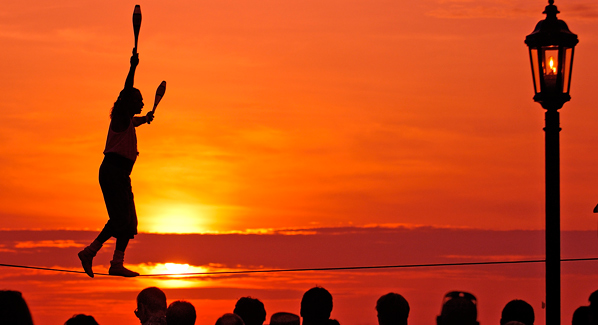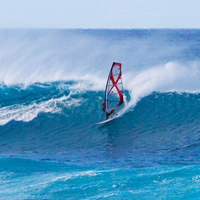You want to get away, but not from your family. Instead, you’d like to find a place in the sun that provides both relaxing moments and exciting memories. A place where you can temper togetherness with some alone time while the younger generation pursues their passions would be ideal. This destination should also be safe, relatively easy to reach and offer a diverse range of sights and activities—just in case you want to take a break from that beach chair and have some adventures. Here are 10 tropical destinations within easy reach of North America, each ideal for a family getaway.
St. Lucia
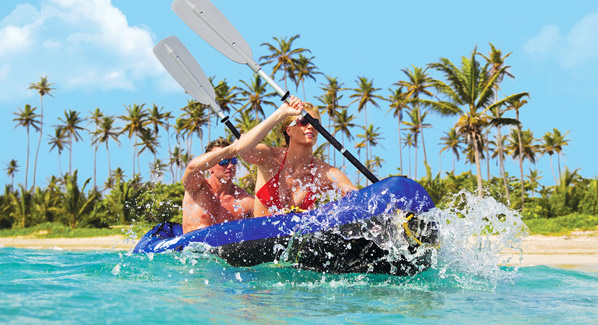
Located near the airport, St Lucia’s Coconut Bay Resort offers a wide range of activities for adults and children. Photo: Richard Hallman/Coconut Bay
The Caribbean’s Windward Islands are green and mountainous, with surf-washed beaches to the east and calmer waters to the west. In between are waterfalls, jungles and scenic overlooks worthy of a hike, a canopy zip-line tour or a horseback ride. One of the easiest to reach from North America is St. Lucia. Currently, there are seven U.S. and Canadian cities offering non-stop flights into Vieux Fort airport on the island’s southern coast. Luxe resorts are hidden away in St. Lucia’s wooded hills and sheltered bays, but not all are suited to the lively sounds of active children. One property where children are not only accepted, but catered to, is the Coconut Bay Resort. This mid-range but highly rated property is close to the airport and departure points for island adventures such as rainforest tram rides and four-wheeler tours. The adults-only Harmony wing is separated from the lively Splash wing, which is home to a water park, paintball court and beach shack; it’s the center for a variety of supervised land and water sports. Meanwhile, parents can enjoy all the grown-up perks expected of an all-inclusive.
Dominican Republic
With direct air service into Punta Cana, the island’s most popular resort area, getting the family to a beach in the Dominican Republic is easy. The crime rate in this region of the DR is almost non-existent, and vacation action centers around the numerous all-inclusive resorts lining the coast. Most waiters, clerks and cab drivers have at least basic English comprehension, and within the resort complexes, you may find yourself having to seek out opportunities to practice your high school Spanish. One of the best places for families, toddlers to teens, is the Club Med Punta Cana, which is just minutes from the airport and directly fronting one of the region’s finest palm-fringed beaches. From the on-site children’s buffet, complete with baby food, to the skate park, hangout lounge and teen spa, the youth programs and recreational opportunities go well beyond the usual kids’ club routine.
Jamaica
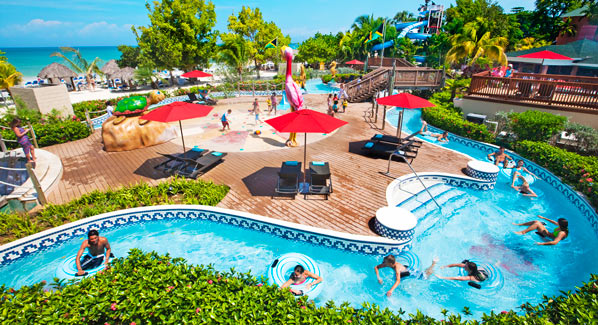
Negril’s Beaches Resort offers a wide range of kid-centric amenities, including a water park and lazy river. Photo: Steve Sanacore/Beaches Resort
Jamaica is ground zero for the all-inclusive lifestyle, and the resorts that focus on families go all out to deliver a complete vacation experience for the younger generation. Parents aren’t forgotten however, and thanks to a wide assortment of infant programs, kids’ camps, and all-age water-sports activities, it’s easy for a family to play together— or pursue their own passions. Montego Bay is the default arrival point for the majority of all-inclusives, and resort shuttles whisk your group directly to a beachfront complex. High on any family’s list—especially those with younger children—is the Beaches property in Negril, which is about an hour away from the airport by shuttle bus. The little ones will be rewarded for their in-transit patience when they are greeted by Elmo and other Sesame Street characters. Older children can lose themselves in a smorgasbord of age-appropriate diversions that include water sports and everything from an Xbox Play Lounge to an under-21 nightclub (relax, there’s no alcohol). Parents can join in the fun or opt for a round of golf, a spa treatment and a private candlelight dinner. For those looking to stay closer to Montego Bay, two of the best family-friendly properties are the Half Moon resort and Iberostar Rose Hall Suites.
Costa Rica
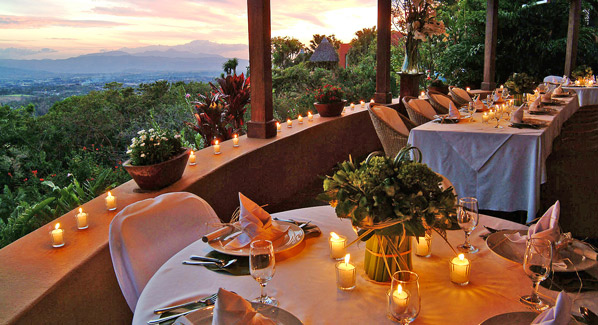
Costa Rica’s Xandara Resort is centrally located, providing convenient access to San Jose and area attractions. Photo: Xandara Resort
Once the kids reach bike-riding age and beyond, Costa Rica becomes a fantastic vacation destination for eco adventures and active water sports. By far the safest country in Central America, Costa Rica has long been a haven for U.S. expats. The country’s mountainous central regions mitigate the tropical heat and provide a magnificent backdrop for rainforest hikes, volcano tours, jungle river rafting, and high-flying zip-line tours. Equally popular are the numerous beachside resorts nestled into the green jungles of the Pacific Coast. Though the distances between regions may not seem great as the crow files, twisting mountain roads can mean drive times of several hours. Rather than try to see and do it all in one trip, it’s best to settle into a base camp resort and sample some of the more exciting adventures that are within easy range of that locale. The beautiful landscaped grounds of Xandari Resort & Spa provide commanding views and easy proximity to the capital of San José, while an hour to the north guests of the Peace Lodge can wander through the adjacent La Paz Waterfall Gardens and relax in eco-lodge luxury. A coastal destination that combines the best of jungle and beach is the Manuel Antonio National Park. The Sí Como No Resort, Spa & Wildlife Refuge is the region’s premier property, while Hotel Costa Verde, with its airplane suite and resident monkeys, is certainly one of the most fun places to stay.
Puerto Rico

Puerto Rico’s El Conquistador resort offers a water park and daily boat trips to a private island. Photo: El Conquistador
If you are stuck in San Juan freeway traffic, with the kids asking “are we there yet,” it might seem like you never left Miami or Manhattan. But once you steer clear of the capital’s urban sprawl, a better side of the island is revealed. Puerto Rico’s green highlands provide miles of back-road exploration and rainforest adventures, while the ocean beckons. Surfers prefer the waves of Rincón to the west, but the island’s clearest waters and sunniest skies are found to the east. Forty minutes from Luis Muñoz Marin International Airport, the coastal town of Fajardo is an epicenter for fishing, sailing and diving excursions, and a jumping off point for the out islands of Culebra and Vieques. Just north of town, the Waldorf Astoria El Conquistador overlooks the eastern water, with an on-site marina, seven outdoor pools and a water park complete with flumes and a lazy river. Families can book into the Las Casitas Village to enjoy the extra elbow room of one- and two-bedroom suites and still be within easy walking distance of all amenities, including the spa and golf course. The waterfront is lacking in sandy beaches, but a catamaran ride from the docks will deliver you to private Palomino Island for a day of beachfront relaxation.
Turks and Caicos
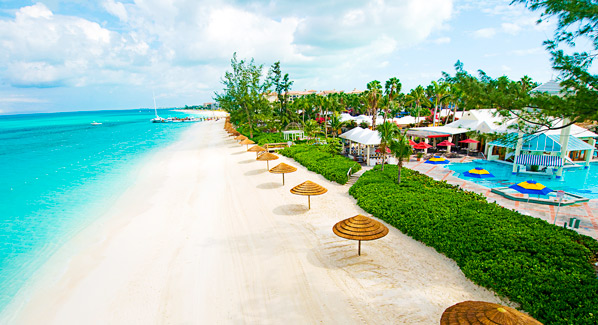
The Beaches Turks & Caicos Resort Village sits on the midpoint of Providenciales’ magnificent Grace Bay. Photo: Beaches Resorts
In their natural state the dry, low-lying islands of the Turks and Caicos aren’t much to look at—until you reach the shore. There, soft white sand meets water that shimmers in shades of emerald and turquoise. Thanks to direct air service and ample supplies of desalinated water, this sun-swept British Crown Colony has evolved into a world-class resort destination. If you arrive on Providenciales accompanied by children, you are most likely headed for Grace Bay and the expansive grounds of Beaches Turks & Caicos Resort Villages & Spa. This property takes the all-inclusive family resort concept to a whole new level, delivering activities and indulgences for all ages—including parents. There’s a dedicated nursery facility and toddlers are watched over by certified nannies and entertained by costumed Sesame Street characters. Older children can frolic in the Caribbean’s largest water park or join guided snorkel tours, beach games and reggae jams. If the teens managed to get tired of the beach, they can move to an age-themed game room, hangout lounge or dance club. Mom and dad aren’t slighted either, with everything from scuba diving to spa treatments, plus 19 restaurants and a dozen bars to sample.
Cabo San Lucas
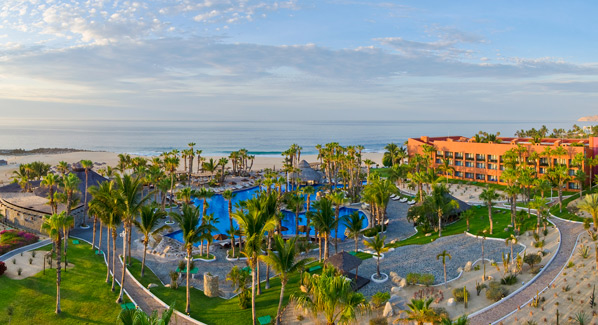
The Melia Cabo Real is a family-friendly resort located north of Cabo San Lucas on Mexico’s Sea of Cortez. Photo: Victor Elias/Melia Cabo Real
Cabo San Lucas can be a party town, but there’s more to Baja’s southernmost settlement than the nightly reveries of the marina district. The same sunny skies, blue waters and warm sands that draw spring breakers and incognito A-listers can also provide the backdrop for a memorable family vacation. A number of resorts are tucked along the coast between the airport at San José del Cabo and Cabo San Lucas itself, offering a base for self-contained recreation on-property, plus reasonable drive times to the cape’s other attractions. One favorite family option is the Melia Cabo Real All-inclusive Beach & Golf Resort, which is kid-friendly both in terms of pricing and amenities. Children under 12 stay free with parents and can enjoy a range of youth-centric activities. A good near-town option is the Playa Grande Resort & Grand Spa, which sits just over the hills from downtown and at the far end of the beach near Land’s End and the Cape’s signature arch. Guests find a range of youth activities, but the real attraction is the chance for some private beach time in one of the world’s most spectacular settings, combined with five-minute access to town.
Paradise Island
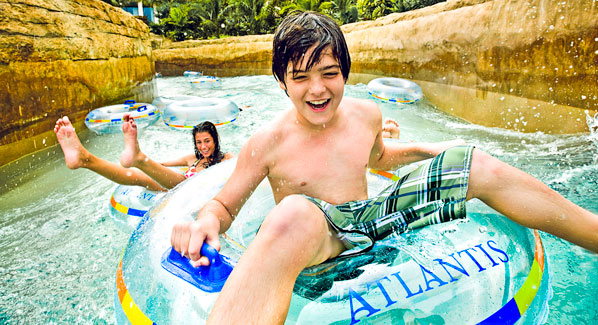
The Atlantis Resort on Paradise Island, Bahamas features a mile-long tube river with rapids and tunnels. Photo: Jeffrey Brown/Atlantis Resorts
Flying into New Providence Island, home to the capital city of Nassau, is easy from points all across the eastern United States. There are several vintage and a couple of newer resorts along the western and southern coasts worth consideration, but once the kids hear “Bahamas” they will probably be thinking “Atlantis.” The marketing machine behind this mega-resort gets the word out on the children’s channels, so there’s a pretty good chance they’ll already know what to expect. You won’t have the property’s beaches, pools or water park to yourself, but everything runs with theme park-like precision. A family of four can book into the more cost-effective Beach Tower and still enjoy all the diversions the resort complex has to offer.
Curacao
If Curacao isn’t on your family’s vacation radar, it should be. The island tempers the practical stability of the Netherlands with a hint of Caribbean spice, providing an experience that is slightly exotic, but ultimately comfortable and safe. You may hear strains of Papiamento or Dutch when strolling through the historic districts of Willemstad, but if you need to ask directions, you’ll probably get an answer in English. Water sports are the primary draw, but the capital city has also made a name for itself in recent years as a regional center for art and culture. You’ll mingle with a mixed bag of Europeans at the cafes or on the beach. A top choice for family groups with mixed-age children is the Sunscape Curacao Resort. Close to both the airport and downtown, this all-inclusive is very kid-friendly, not only because of the various youth-central amenities and activities, but also because of its location. The sheltered beach is perfect for swimming and first-time snorkelers, and the Curacao Sea Aquarium complex is within easy walking distance.
Hawaii
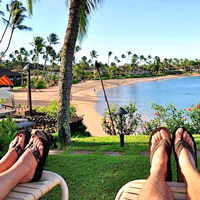
Napili Kai Beach Resort, Lahaina, Maui. Photo: Jim York / Napili Kai Beach Resort
Hawaii’s resort infrastructure is second to none, and it’s a tropical destination that’s also part of the United States, so you can skip the passport and count on all the comforts of home, and then some. Each of the four major destinations has its own vibe. Oahu offers urban amenities or an escape to the north shore; Kauai is a bit wilder and ideal for outdoor adventures and relaxing natural surroundings; Hawaii (aka the big island) tourism focuses around Kona and golf and big game fishing are prime. It is the island of Maui that offers the greatest diversity of activities for children of all ages, and quite a few resorts cater to families with water parks, youth camps, game rooms, social activities and so forth. Sometimes, less is more, and if you want to focus on together time and relax at a resort where you don’t have to ride a tram to get to the dining room, consider the Napili Kai Beach Resort. Its low-rise condominium accommodations are set on ten acres of landscaped grounds fronting a quiet beach and snorkel-worthy Napili Bay.

